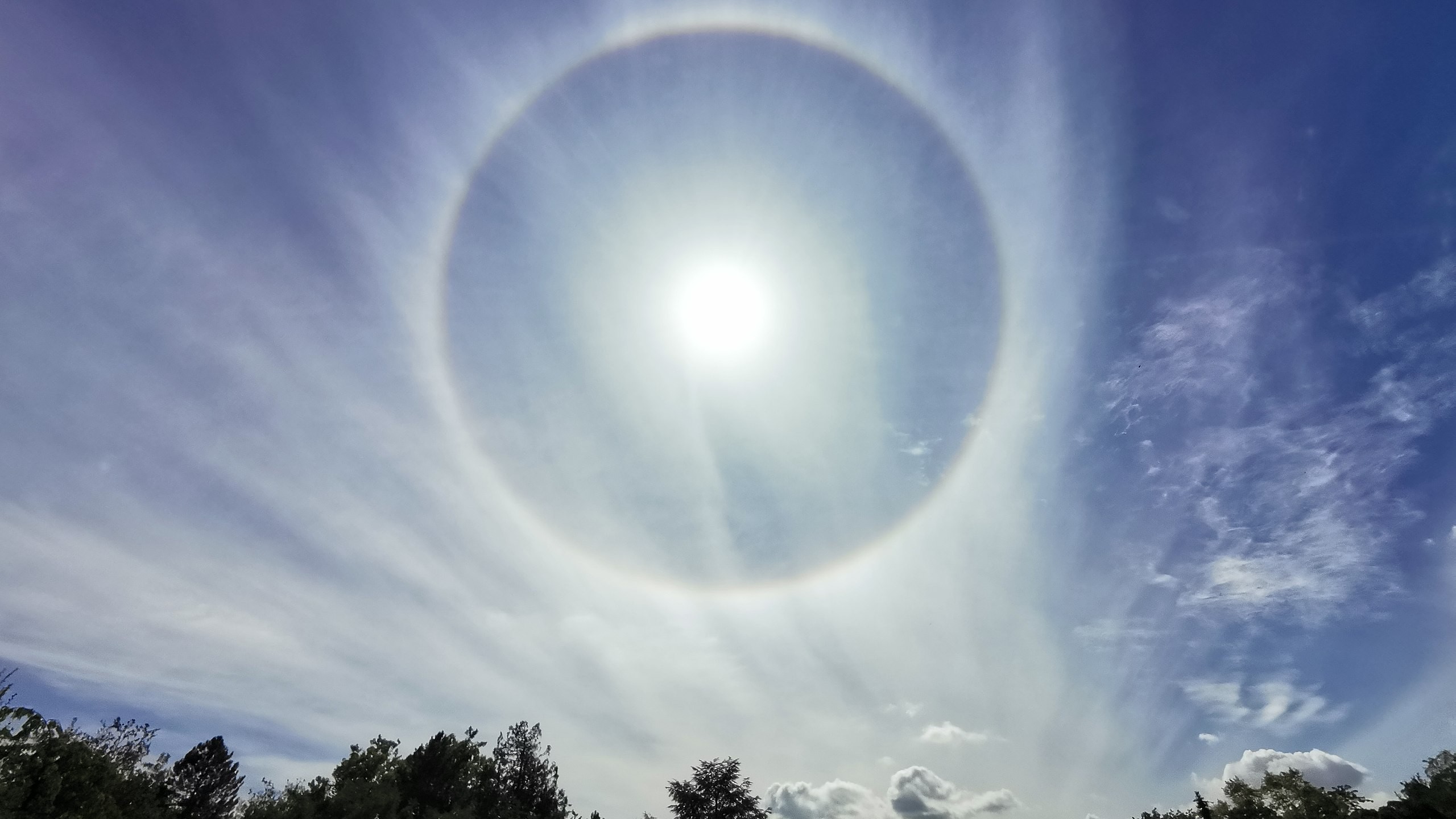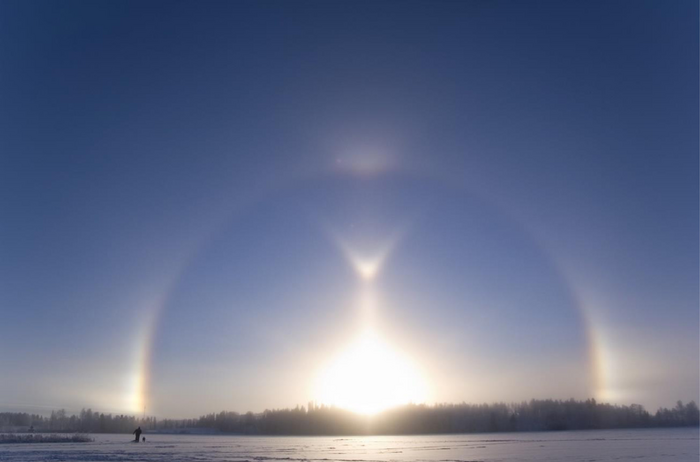Mysteries of some atmospheric halos remain unexplained after 5,000 years
The origins of some atmospheric optical illusions remain unknown, even after millennia of observation.

For the first time in almost 5,000 years of observations, researchers have fully cataloged optical illusions created in the sky as light shines through ice crystals known as atmospheric halos.
The atmospheric halo 'inventory' details frequently seen atmospheric optical illusions from known sources as well as shedding light on rarer halos, including ones with origins that are currently a mystery.
Halos are caused by the accumulation of water ice crystals smaller than 10 micrometers in the atmosphere. Qualities of these atmospheric illusions such as their colors or whether they possess arcs, spots or white rings, are determined by the shape and orientation of the ice scatter from and the path light takes towards these crystals. Often, the type of crystal behind the scattering can be identified by the shape of the halo they create.
Related: What makes Earth's atmosphere so special?
These atmospheric illusions have been documented by humanity since at least the Babylonian era — which began around 1895 B.C. — when the phenomena were detailed on cuneiform tablets. However, thanks to the availability of cameras as a result of the proliferation of mobile phones, scientists have never had so much data on these phenomena at the tips of their fingers.
In addition to an intensive catalog of halos, this new research — which is founded on observations collected up until the end of 2021 — highlights gaps in the study of the phenomena. The authors behind the inventory also lay out promising methods for both their further observation and the processing of collected data, urging the public to get involved in recording these phenomena using their phones and digital photography.
The complete catalog divides the phenomenon into 119 different types and also details the conditions such as temperature and humidity required to create them.
Get the Space.com Newsletter
Breaking space news, the latest updates on rocket launches, skywatching events and more!

Halos seen at least once a year were defined as 'commonly observed' and are usually formed by the scattering, refraction and focusing of light from the sun or reflected off of the moon by hexagonal ice crystals in a disordered, horizontal, or vertical orientation.
Another category — 'rare halos' — which includes atmospheric illusions accounting for only around one percent of all observations, is further divided into halos with known origins and those with unknown and exotic sources.
"As a rule, halos are formed as a result of the interaction of light with hexagonal crystals of water ice," Finnish Geospatial Research Institute scientist and Ph.D. student at the University of Helsinki, Jarmo Moilanen, said in a statement. "However, some of the documented exotic halos cannot be explained in this way."
Moilanen, who developed the inventory of atmospheric halos with University of Helsinki professor, Maria Gritsevich, named some examples of such exotic halos. "The mysteries of the origin of elliptical halos and Bottlinger rings have not been solved since their discovery at the beginning of the 20th century," the researcher said. "Among the mysterious ones is the so-called Moilanen arc, which I first discovered in 1995."
The researchers suggest that the key to the production of mysterious atmospheric halos could be ice crystals with anomalous shapes or crystals of other minerals scattered in the air.
Gritsevich said that research suggests that the unusual shape of exotic halos is due to human-caused factors, such as atmospheric emissions or the strong electromagnetic fields generated by high-voltage power lines. She added these factors can disrupt the orientation of ice crystals in the air possibly giving rise to exotic halos.
"To unravel such mysteries, samples of ice crystals forming exotic halos, were specially collected in the atmosphere, but this experience also gave more questions than answers," Gritsevich said in the statement, adding that the atmospheric halos spotted around other planets could be of use in unraveling this mystery.
This includes halos observed and documented in the atmosphere of Mars, which could also be used to better understand the thin diffuse atmosphere of the Red Planet.
"This observation proves that clouds of hexagonal crystals of water ice or other minerals exist in the atmosphere of Mars," says Maria Gritsevich. "There are suggestions that the halos could be formed by carbon dioxide crystals."
She added that mathematical modeling of the factors that can lead to the formation of a halo could provide valuable information about the state of the Martian atmosphere.
The duo's research was published in the Journal of Quantitative Spectroscopy and Radiative Transfer.
Follow us on Twitter @Spacedotcom or on Facebook.
Join our Space Forums to keep talking space on the latest missions, night sky and more! And if you have a news tip, correction or comment, let us know at: community@space.com.

Robert Lea is a science journalist in the U.K. whose articles have been published in Physics World, New Scientist, Astronomy Magazine, All About Space, Newsweek and ZME Science. He also writes about science communication for Elsevier and the European Journal of Physics. Rob holds a bachelor of science degree in physics and astronomy from the U.K.’s Open University. Follow him on Twitter @sciencef1rst.









